How do whiteflies appear in the greenhouse and how to get rid of them?
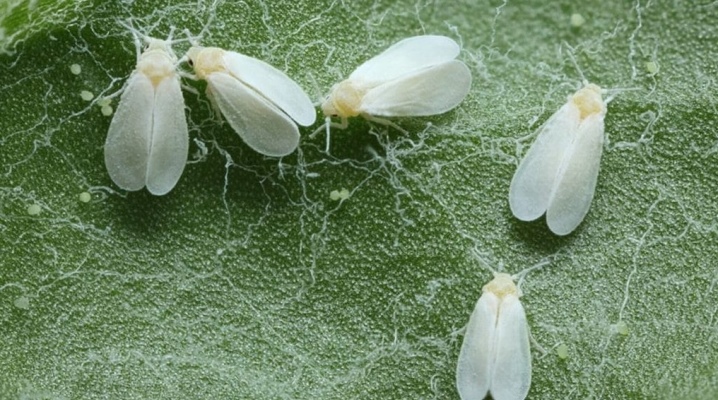
Growing plants is a painstaking process that requires a lot of effort and time. The appearance of pests can ruin hours, months, years of efforts of the gardener.


Description of the pest
Whitefly is a very common greenhouse pest. The conditions of high humidity, high temperature, which are maintained in greenhouses, contribute to the rapid reproduction of the insect. That is why the appearance of the whitefly is so dangerous. Not one plant may be affected, but an entire greenhouse.
The size of the dipteran insect does not exceed 2 mm. The wings are white double, the body is yellowish-brown. Adult insects have transparent antennae. The length of the whitefly caterpillars is 0.5-0.8 mm. The transparent spherical shape is very similar to aphids. Larvae hide under leaves in groups of 8-15 individuals.
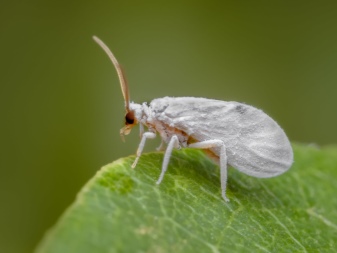
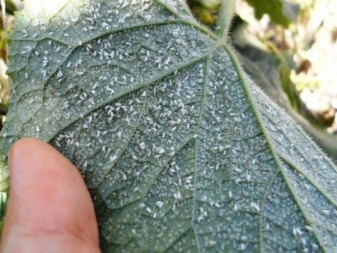
The life cycle of a winged insect consists of three stages. It takes nine days for the egg to develop. After that, a larva appears, which goes through 6 stages of maturation. Caterpillars of the 1st stage are the most voracious, as they store nutrients for further transformation. When the larva reaches the 6th stage, it pupates, covering itself with a dense shell. At this stage, the insect is called a "nymph".
A week later, an adult hatches, that is, an adult. After 15-20 hours, the adults are ready for mating. The cycle starts again. Eggs are most difficult to destroy as they are protected by a dense shell. The lifespan of adults varies from 17 to 70 days. It all depends on the environmental conditions. These pests suck the sap from the plants. Their leaves darken, then die off. Waste products of whiteflies provoke the appearance of fungal diseases.
That is why it is important to timely detect the appearance of a dangerous insect.
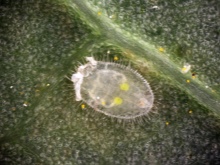

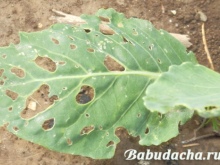
Species overview
Whitefly differs in species depending on the distribution, as well as the preferred garden culture. In total, there are 200 species of insect, but most often gardeners are faced with four of them.
Tobacco or cotton
In appearance, it does not differ from the greenhouse, however, it is included in the list of quarantine objects. This is due to the fact that this species is widespread throughout the world, excluding the northern regions, where the temperature drops to -40 -60 C. This pest is a carrier of infectious and viral diseases. Plants damaged by this insect die in 8 out of 10 cases. After all, the tobacco whitefly is resistant to many pesticides. Prevention and alternation of different insecticides will help to save the plants.
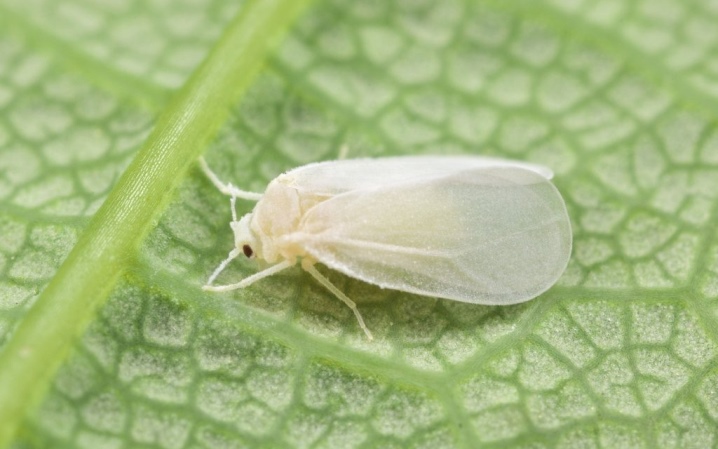
Cabbage or celandine
It settles on white cabbage, as well as on many grasses and weeds. It differs from the greenhouse for wintering, however, the eggs of the insect are resistant to frost. After overwintering, the larvae hatch and begin to destroy the plants.
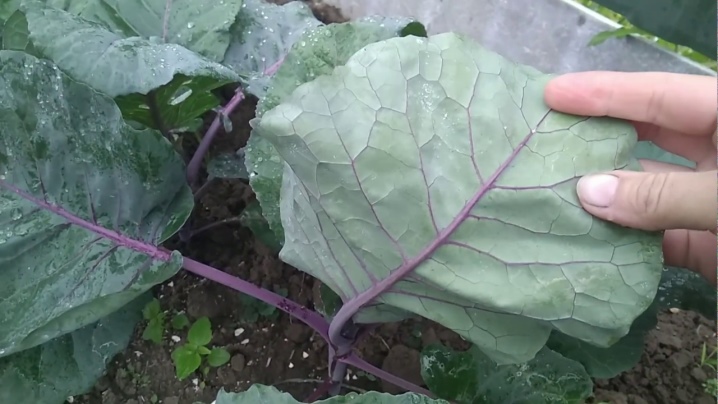
Strawberry
This species infects strawberries by sucking nutrients out of them. The appearance and taste of fruits affected by the pest deteriorates sharply. The strawberry insect is most often found on the territory of Ukraine and Russia.
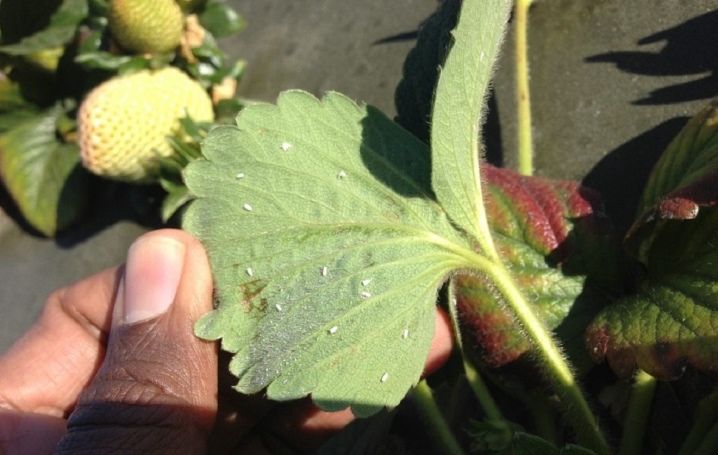
Greenhouse or greenhouse
This species does not tolerate winter, which is why the best environment for its development is greenhouses. In a closed room, the pest lives and reproduces all year round. The optimum temperature for development is +20 - + 25C. Insect colonies thrive when the air humidity is 55-80%.

Reasons for the appearance
What results in the appearance of a whitefly is not always clear. However, the main possible reasons can be identified.
- The favorite habitat of this pest is subtropical. In hotbeds and greenhouses, conditions of high humidity and temperature are created, which is why you can notice that the whitefly has started up and began to harm the plants.
- Soil taken from a forest, vegetable garden or garden can be infected with whitefly eggs.
- A plant purchased from a store can also carry a pest.
- The whitefly can settle on seedlings and get into the greenhouse with it.
Most often, the greenhouse pest settles on tomatoes, cucumbers, peppers, eggplants and celery. Therefore, it is important to inspect these plants very carefully.

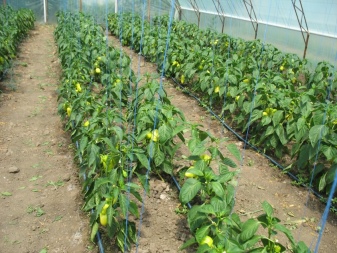
What can you fight with?
The body of an adult is covered with a dense coating, which makes the whitefly immune to many insecticides. Still, there are ways to overcome this pest. To destroy the whitefly, it is better to prevent it from appearing by treating the greenhouse in early spring before planting seedlings. If this is not done, it will be extremely difficult to remove the insect in the summer. But don't despair. It is possible to defeat a dangerous pest even in advanced cases. It all depends on the means used.
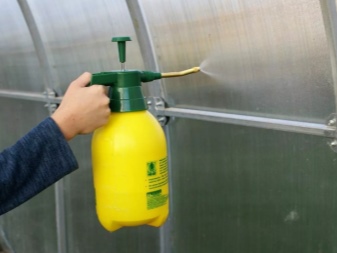

An effective way to get rid of pests is to poison with chemical poisons. Of course, in this case, plants may also suffer. However, restoring greenhouse crops with top dressing is better than losing the crop altogether. Dealing with a whitefly in a greenhouse is much more difficult due to the constant temperature and high humidity there. In addition to treating plants with various insecticides, disinfection must be carried out in polycarbonate greenhouses. It consists of:
- harvesting weeds;
- cleaning garden tools;
- replacement or complete cleaning of mulch;
- checking the soil by digging;
- washing the frame and walls of the greenhouse with disinfectants;
- freezing the greenhouse if processing is carried out in the fall;
- fumigation with smoke bombs.

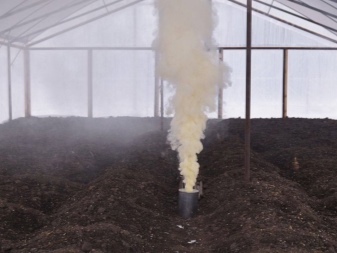
Chemicals
Insecticides are the most effective agents against various dangerous insects. Despite this, it is recommended to use them only in case of mass infection of plants. This is due to the high toxicity of the substances that make up insecticides. Chemical treatment is carried out strictly in protective clothing. The mechanism of action for such substances is the same: the poison is absorbed through the root, entering the "veins" of the plant. Thus, the pests feed on the poisoned juice. It is worth alternating the poison to prevent insects from becoming addictive.
- "Karbofos" 10-50% consists of malathion, a powerful insecticide used for many horticultural and horticultural crops. Only 10 ml of the substance is enough for 10 liters of water. The mortar will be sufficient for 9-10 m2. Due to its high toxicity, it is not recommended to use the product more than twice a year.
- "Actellik" - a complex product that instantly kills pests. In 1 liter of water, dilute 2 ml of the drug, irrigate the soil and plants. After three days, butterflies and whitefly larvae die.
- "Aktara" recognized as the best remedy for whitefly control. Produced in sachets of 4 g. Dilute 1.5 g per 3 liters of water. The solution is poured over the plants under the root.
"Aktara" is not as toxic to the plant as other drugs, but it perfectly eliminates pests.
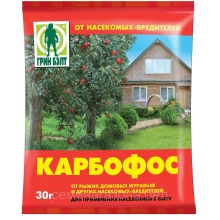
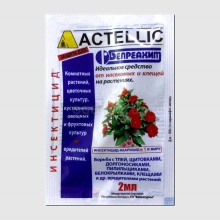

Biological preparations
Plants are attacked by pests all year round. The use of insecticides is prohibited during flowering and fruiting periods. In this case, biological products come to the rescue. Their advantage is that they can be used at all stages of plant growth. Also, these substances do not harm beneficial insects, animals and humans. Pests do not develop resistance to biological products. Therefore, there is no need to look for numerous analogues of an effective remedy.
- Fitoverm available in ampoules, liquid and dry. For different groups of plants, they are bred in different ways. Dissolve 1 ml of the substance in 1 liter of water and spray the garden trees and berry bushes. Vegetable crops are also irrigated, but using 0.5 ml of the product per liter of water. The poison does not accumulate in the roots and fruits of plants, while affecting the intestinal system of pests.
- Fitosporin - a biological product of a wide range of effects. It is based on beneficial fungi that destroy harmful fungal diseases. It is actively used both for greenhouses, orchards and vegetable gardens, and for indoor plants. The product is used for spraying and watering. The biological product can be processed in any weather. After rain, it is advisable to repeat the treatment, as part of the preparation is washed off. Dilution proportions are indicated in the instructions.
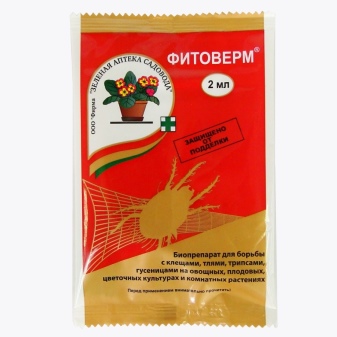

Mechanical removal
The mechanical method of removal is considered the most harmless. However, it is not as effective if many plants are affected. If the extent of the infection is not so serious, mechanical removal will help get rid of the whitefly.
- Manual removal is a painstaking process with several steps. First you need to "bathe" the plants under the "shower". To do this, use a watering nozzle and water the plants abundantly. This procedure will bring down some pests. Next, a soap composition is prepared: tar and laundry soap are rubbed in equal proportions, diluted with warm water. This solution is used to wipe the leaves of plants. This method allows you to get rid of whitefly larvae and eggs. The soap solution will also remove the mucous film from the leaves, which will prevent the appearance of fungal diseases.
- The advantage of the glue trap is the absence of toxicity. Also, this method will help to identify the number of whiteflies and determine the appropriate control method. Ready-made glue traps are made from waterproof paper and non-drying glue. Special garden traps are sold against whiteflies. Sticky flies are also effective.
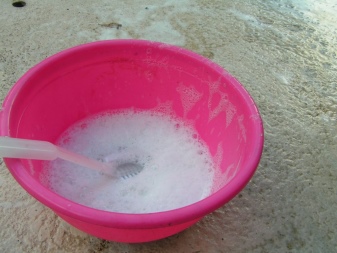
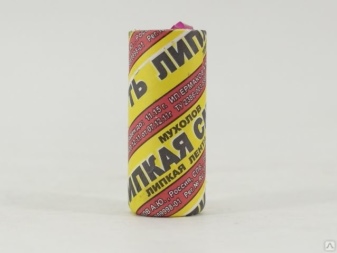
You can make glue bait yourself.
Liquid rosin is used for the glue. Then petroleum jelly, castor oil and honey are added in equal proportions. Homemade glue is mixed and cooled. Then it is applied to the base and placed at the level of the plant tops. For reusable applications, you can use plywood painted with bright yellow paint as a base. Once the trap is full of whiteflies, they are washed off with soapy water.
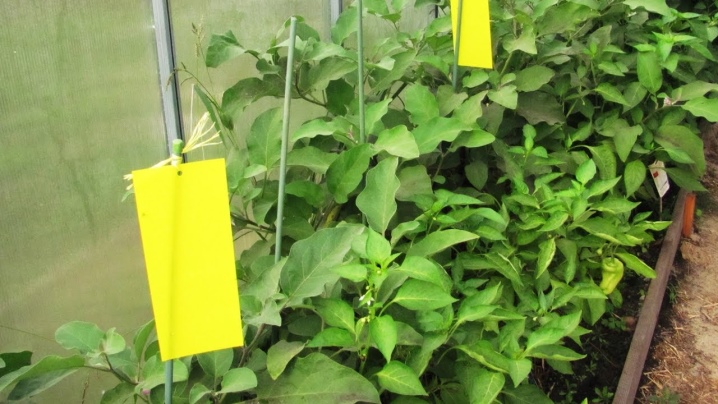
Folk methods of struggle
Before the invention of insecticides and various drugs, there were effective folk ways to get rid of whiteflies. They are still relevant today, as they are harmless to plants, animals and humans.
- Garlic infusion can kill pests in a month. To prepare it, you need to chop a head of garlic, pour a liter of water and remove it in the shade for a day. Plants are sprayed with a solution 3-4 times with a week break.
- If the first signs of the presence of a whitefly appear in the greenhouse, tobacco dust can be used. The insect is afraid of strong odors. In dry form, dust is simply laid out in the beds. The infusion of tobacco is also effective. The recipe is simple: 500 g of dust is diluted with 10 liters of water, insisted for a day. After that, the mass must be squeezed out, and the infusion must be filtered. Add water according to the amount of the resulting solution. Processing is carried out until the pest disappears. The breaks between "procedures" are 3-5 days.
- Dandelion infusion is prepared from freshly cut bushes, including roots. A liter of hot water is poured into 40 g of finely chopped dandelion. Then simmer on low heat for 10-15 minutes. The resulting broth is removed in a dark place for 3-4 days. The infusion is diluted with water in a 1: 1 ratio.
- Mulching the soil can protect plants from many problems, including whiteflies. You can mulch the soil around the seedlings with shredded foil. Of course, this method does not give a 100% guarantee, but it is harmless, which is also important in gardening.The method is better suited for undersized shrubs and decorative flowers.
- An infusion of yarrow is effective against whitefly. Pour fresh leaves with a liter of water and let it brew for 1-2 days. The broth is filtered and the plants are sprayed 2-3 times with a week break.
- When a lot of pests have appeared in the greenhouse, fumigation with smoke bombs is an excellent method of dealing with them. It is better to use tobacco sticks, as sulfuric ones will not bring the expected result. Checkers are placed around the perimeter of the greenhouse. The number of checkers used depends on the area of the greenhouse. After setting fire, the greenhouse is tightly closed for a day.
- Tar soap washes away larvae, eggs and sticky mucus left by whiteflies well. Vegetable gardens, orchards and greenhouses are sprayed with soapy water. It is also used for processing leaves. The soap is rubbed on a grater. Then it is diluted with water in proportions 1: 6. You can also add laundry soap. It will enhance the antibacterial effect. The solution can be used for spraying. The lather is applied to the back of the sheet. If one procedure does not help, it is repeated after 6-10 days.
- An unusual method is to plant so-called guard plants. Usually these are plants with a pungent odor that many insects do not like so much. These "defenders" include ageratum, calendula, as well as herbs: basil, thyme, wormwood. They are planted around the perimeter of the greenhouse. They are able to scare off pests.
- Some gardeners use insects to fight the whitefly. These are parasites that do not harm seedlings and humans, but are destructive for a flying pest.

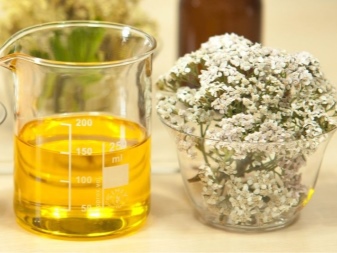
Encarsia destroys the larvae by laying eggs in them.
A grown insect hatches from a whitefly, and it dies. When using encarzia, it is undesirable to use chemicals.
Predatory bug Microlofus Caliginosus. This insect has a great appetite. It is capable of quickly limiting the whitefly population and preventing its further appearance. In case of mass infection of the greenhouse, it is necessary to add 5-7 individuals per 1 m2.
Tansy, marigolds and daisies will help to lure ladybirds and lacewings. These insects quickly eat butterflies and larvae, reducing their population.
Predatory mites of the genus Abliseius are very effective against pests. They act like encarsia. Entomophages can be purchased at gardening stores and ordered online. They are delivered in packages and tubes of different sizes.
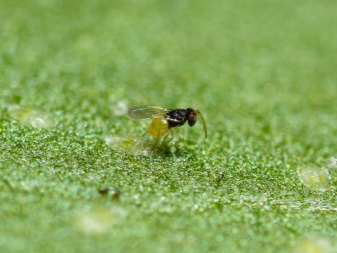
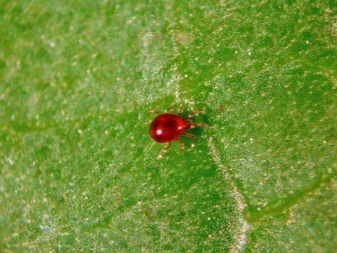
Prevention measures
Prevention will help prevent the appearance of the whitefly and relieve many of the problems associated with this pest. First of all, it is important to keep the greenhouse clean. It is imperative to clear the beds of weeds, remove damaged stunted shoots. It is better to dispose of all unsuitable sprouts. It is important to keep the tools used clean. It is necessary to periodically treat them with disinfectants.
The soil can be a cozy wintering place for whitefly eggs. In the spring, the hatched larvae will be a lot of trouble. To avoid such a scenario, in late autumn, you need to dig up the ground on a shovel bayonet. In autumn and early spring, it is advisable to thoroughly disinfect the greenhouse. It is recommended to treat all corners with a chlorine solution. In winter, you can ventilate the greenhouse room or completely remove the frame so that the soil is frozen.
This will prevent the pests from overwintering.
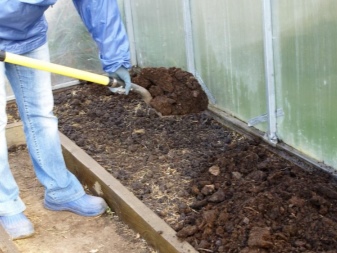
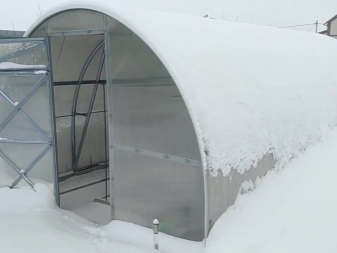
Mosquito nets on ventilation openings will help protect the greenhouse from insects. An effective preventive method is disinfection using garlic. In order to carry out such processing, a plastic container is filled with garlic chopped in a garlic. The containers are placed around the perimeter of the greenhouse. Containers and plants are covered with plastic wrap for 7 days. The film should be folded back once every 1-2 hours.
Greenhouse maintenance is not easy. It is important to monitor the condition of the plants in order to provide timely assistance.Having found the first signs of the appearance of a whitefly, it is advisable to apply a mechanical method of protection. If the situation has worsened, it is worth moving on to folk and biological substances. Use chemical insecticides only as a last resort. The main thing worth making an effort is preventive measures. After all, it is easier to prevent the emergence of pests than to deal with their numerous colonies. The use of one method for destruction will not give the desired result. In the fight against such a dangerous insect as the whitefly, comprehensive protection is important.











The comment was sent successfully.